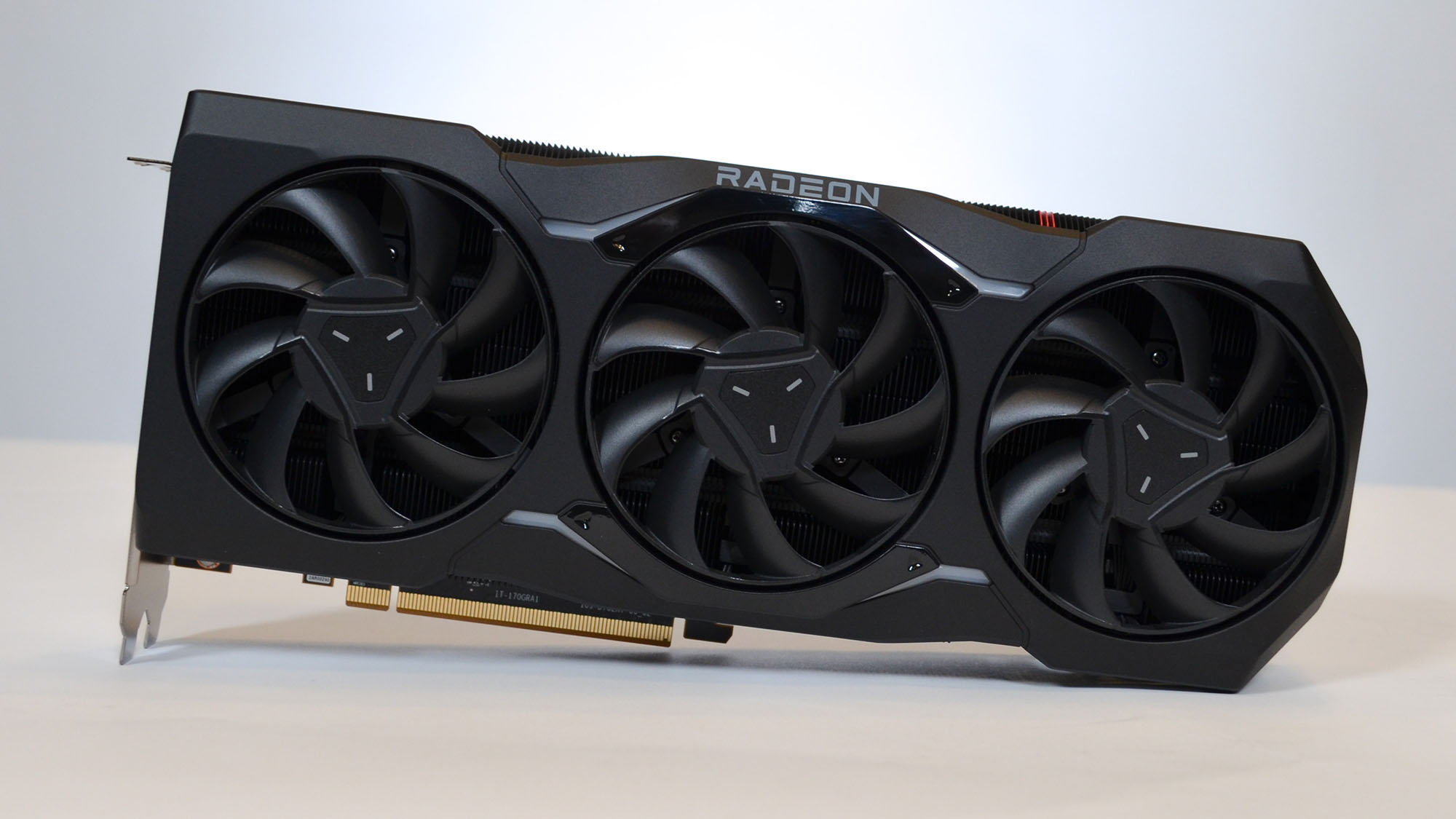AMD's next-gen flagship GPU could rival Nvidia's mighty RTX 5090 - and I couldn't be more excited
The prospect of Radeon being competitive at the top-end again is an enticing one

- Yet another leak has emerged about AMD's next-gen GPUs
- It shows a powerful flagship, one that could potentially rival the RTX 5090
- Other models include a mid-ranger, along with two lower-end offerings
Another rumor has outlined AMD's apparent plans for its next-gen range of graphics cards, again indicating that Team Red intends to compete at the high-end this time around.
Of course, that's an area that RDNA 4 skipped, with its top offering being the upper-mid-range RX 9070 XT; however, there have long been rumors that AMD isn't going to shy away from producing a beefy GPU with RDNA 5. Or UDNA, as it may alternatively be called, which I'll return to shortly.
Wccftech reports that well-known GPU leaker Kepler spilled the beans on the Anandtech forums in an ongoing, rambling discussion thread (which was started late last year, in fact).
Kepler believes that the flagship RDNA 5 GPU will have 96 Compute Units (CUs), and that the range will drop down with the next tier having 40 CUs, followed by 24 CUs and 12 CUs, respectively, for the lower-end graphics cards.
As Wccftech further notes, this is tentatively backed up by ZhangZhonghao, a regular leaker posting on the Chiphell forums in China, who theorizes there will be an 'extra-large' GPU - in other words, a flagship high-end model - followed by medium (mid-range), small, and tiny graphics cards.

Analysis: how long is a rendering pipeline?
Obviously, season this heavily, as even if this is true - based on the leaked diagram Kepler shares (and the backup theory from Chiphell) - it could just be AMD's current thinking, which may change down the line.
So, how powerful might an RDNA 5 graphics card with 96 Compute Units be? As it's less than a previous rumor indicated, which was 154 CUs. However, this is a bit of a 'how long is a piece of string' question as there's a whole load of variables involved, including how much difference the new architecture makes to the overall performance of AMD's next-gen GPUs, and how much cache is used (with some big increases potentially in the cards there, Kepler notes elsewhere).
Sign up for breaking news, reviews, opinion, top tech deals, and more.
However, all rumors suggest that AMD is making significant changes to the next generation of its Radeon graphics cards, which is why they might adopt the UDNA architecture rather than RDNA 5. The 'U' of UDNA refers to a 'unified' architecture, as this would supposedly represent the joining of RDNA (gaming) and CDNA (data center) architectures, all under one umbrella - a huge move.
So, in some ways, it makes sense that AMD would be planning a power move in terms of a proper flagship graphics card, given such a major shift in its GPU landscape. And so it's easy to believe that the intention will be to compete with the top-end of Nvidia's GeForce range.
Generally speaking, then, trying to pin down the spec of the possible RX 10090 XT (the logical progression for naming, although I think the flagship will be called something entirely different) at this point is a waste of time. That spec is likely to be fluid and changing, anyway, as we are some way off the realization of AMD's next-gen Radeon products (which are slated to arrive late in 2026, if not 2027).
All we need to know is that it's looking increasingly like AMD is going to offer a compelling rival to the RTX 5090 (as previous performance estimations have broadly suggested).
Although it is conceivable that Nvidia may have an RTX 6090, or equivalent, on the table by the time the next-gen Radeon flagship turns up, Team Red should beat its rival to the punch based on current chatter from the grapevine. And indeed, maybe this could spur Nvidia into making an RTX 5090 Super, but I'm getting carried away with the wild speculation (and besides, such a GPU would cut into the supply of chips that Team Green could use for much more profitable AI graphics cards).
Suffice it to say that AMD is looking towards producing a very powerful GPU with its next-gen range, one that'll please enthusiast gamers with plenty of money to spend - and Nvidia will have to sit up and take notice of that, should these rumors pan out. Especially if AMD can undercut with pricing, which shouldn't be too big an ask given how much Nvidia demands for its top dog GeForce graphics card.
You might also like
Darren is a freelancer writing news and features for TechRadar (and occasionally T3) across a broad range of computing topics including CPUs, GPUs, various other hardware, VPNs, antivirus and more. He has written about tech for the best part of three decades, and writes books in his spare time (his debut novel - 'I Know What You Did Last Supper' - was published by Hachette UK in 2013).
You must confirm your public display name before commenting
Please logout and then login again, you will then be prompted to enter your display name.